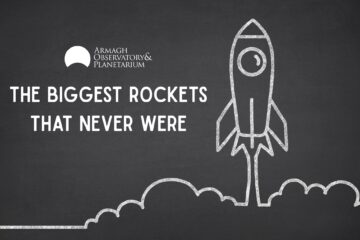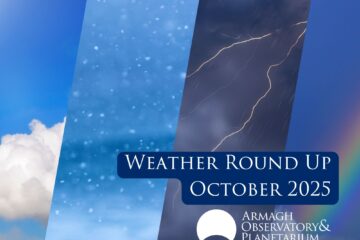Article written by: Heather Alexander, Education officer
At the Armagh Observatory and Planetarium we have been having a look at all the things that are going to happen throughout the year and trying to select some of the events that we are most looking forward to. Needless to say this was a hard task, but we have managed to come up with a top 10 list for you!

Happy 50th Anniversary Apollo 11
As you may already know, humans have landed and walked on the Moon. This year marks the 50th Anniversary of the momentous occasion. Neil Armstrong and Buzz Aldrin made history in July 1969, and will forever be known as the first men to walk on the Moon. Michael Collins, the third man on the mission, also made history as the first person to fly solo around the Moon. This anniversary will be celebrated around the world, and we here at the Armagh Observatory and Planetarium will be doing the same. We have numerous activities organised so keep an eye out on our website and Facebook page for more details.
Happy 50th Anniversary Bovedy Meteorite
This is an event that we are especially looking forward to! In Northern Ireland in 1969, a meteorite fell. It was the first meteorite where the sound of its passage through the atmosphere was recorded, and it split in two. One piece landed in a field in Bovedy and the other half crash landed through the roof of a police store station in Sprucefield in Lisburn. We have half of this meteorite in our collection and we plan to have some events on both the 13th and 25th April to mark this historic event. This will include a special presentation from artist Noel Connor who remembers seeing the Bovedy as a school boy in Belfast. He has created a special Dome show around memories of that day. Keep an eye on our Facebook page and our website for more information.

Lunar Eclipse January 2019
On 21st January there will be a total lunar eclipse visible in Northern Ireland. This is very exciting, and will be your last chance to see an eclipse like this in Ireland for a decade. We’ve already written several blog articles about this, check them out HERE and HERE. A Lunar Eclipse occurs when the Moon passes into the Earth’s Shadow, turning it a ghostly red colour! We have an event planned for the morning of the eclipse, with different talks and presentations and also viewing through our historic Grubb Telescope!

Hayabusa2
We’ve been keeping an eye on the Japanese Hayabusa2 mission for some time now, and this year it will final take sample from its selected asteroid! Hayabusa2 was launched on 3 December 2014 and rendezvoused with near-Earth asteroid 162173 Ryugu on 27 June 2018. In September and October of 2018 Hayabusa2 successfully landed 2 rovers on the surface of Ryugu. The date is yet to be determined but it is believed that some time in February of this year a sample will be taken from Ryugu and then in December Hayabusa2 will make its journey back towards Earth!

CHEOPS
The Characterising Exoplanets Satellite, or CHEOPS, is a European Space Agency project. As stated on the ESA website, CHEOPS “will observe individual bright stars that are known to host exoplanets, in particular, those in the Earth-to-Neptune size range. By targeting known planets, CHEOPS will know exactly when and where to point to catch the exoplanet as it transits across the disk of its host star.” The launch date is expected to be between 15th October and 14th November 2019. This will be an exciting event for all those involved in the creation of CHEOPS and we can’t wait to see the data that this satellite will provide for the astronomical community!

Chandrayaan-2
Chandrayaan-2 will see ISRO (Indian Space Research Organisation) make its first attempt at a soft landing on the Moon! This is scheduled to happen in early 2019, with estimated dates between late January to late February and April. More information will be available closer to the time, once all the relevant tests and checks have been carried out. The Chandrayaan-2 will consist of a Lunar Orbiter, Lander and Rover, all developed by India. We can’t wait to hear and see more about this mission, and after the success of China’s Chang-e 4 at the start of January, we have high hopes for Chandrayaan-2.

Spektr-RG
Spektr-RG is a Russian and German made high energy astrophysics space observatory, with a planned launch for March 2019. It will specialise in X-Ray astronomy and will spend 4 years conducting an X-Ray Survey. This survey will be conducted by the primary instrument, the eROSITA. and it will hopefully detect new clusters of galaxies and active galactic nuclei. The second instrument is the ART-XC and it is an X-Ray telescope.

Chang-e 5
After the huge success of Change-4, the Chinese have been developing Chang-e 5 and it is also a Lunar Lander, but also a sample return vehicle. It will be China’s first sample return mission and is set for launch in December 2019. It is aiming to return at least 2kg of lunar soil back to the Earth.

The Parker Solar Probe
Back in August 2018, the Parker Solar Probe was launched, and its mission is to unlock the mysteries of the Sun’s atmosphere. 2019 will see the probe reach the second and third perihelion. You might be wondering, what is a perihelion? The perihelion is the point in the orbit of a planet, asteroid, comet or satellite that is nearest to the Sun. It is the opposite of aphelion, which is the point farthest from the Sun. The second perihelion will be reached on 4th April, and the third perihelion will be reached on 1st September. The probe also gets gravity assists from the planet Venus. The second gravity assist from Venus will occur on 26th December 2019.

Transit of Mercury
A rare transit of Mercury will occur on 11th November 2019. This means that the planet Mercury will move directly between the Earth and the Sun, and those with proper telescopes that have solar filters applied will be able to observe it. Weather permitting, we will be able to observe this phenomenon here in Armagh in Northern Ireland! This is a rare occurrence and the next transit of Mercury is not set to happen until the year 2039.



3 Comments
David Hamill · March 17, 2019 at 17:03
I love the planetarium and everything that takes place there. I have been numerous times and I’m disabled and live in England. Keep up the good work and remember to catch a falling star you must look up.
admin · March 19, 2019 at 16:32
Hi David, thank you for the lovely comment! We’re so glad you’ve had great experiences here with us and we look forward to seeing you again in the future. That is also an excellent piece of advice! One of our favourite is “Don’t tell me the sky’s the limit when there’s footprints on the Moon!”
10 issues you'll want to learn about Area – 2019 - Astronomy Hobby ZoneAstronomy Hobby Zone · February 15, 2019 at 12:08
[…] Supply hyperlink […]